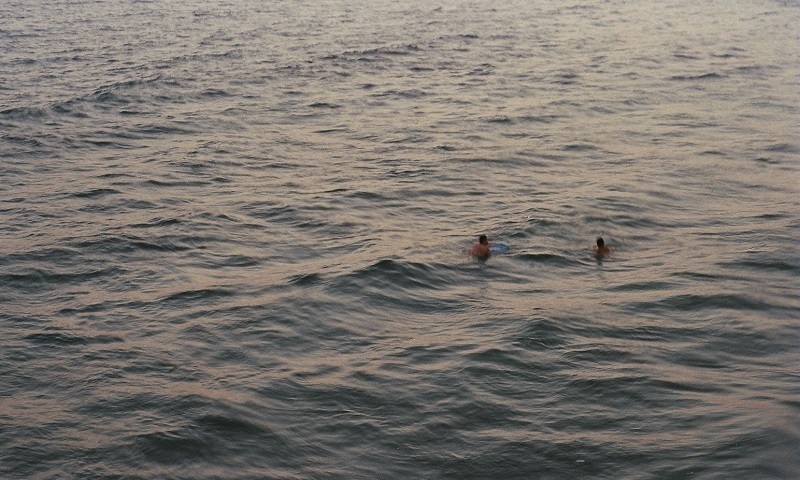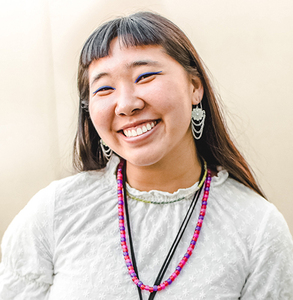Hello to all of you that are interested in the Art Program at Biola! You have clicked on this blog post - whether intentionally or subconsciously - and expressed some form of interest because this is a designated space to talk about the process of putting together an art portfolio! Yippee! Now, I want to disclaim that I am no expert in this area, as I am only half-a-semester into my college experience, but I will do my best to help all of you potentially-future-art-students with my limited knowledge.
One of the most important things to note when applying to Biola, particularly with the intention to be an art major, is that you do not have to apply separately to this program. Unlike Cinema and Media Arts and the Nursing Program, to be a part of the art department does not require a separate application process. In other words, anyone can be an artíst at Biola! Now, that does not mean that you should disregard the art portfolio submission just because it is not required. Hint: there may be money involved ;+)

Biola has a plethora of scholarship opportunities, with one of them being a department scholarship. The Art Program at Biola is one of the few departments to participate in this type of financial aid. The art department offers students the chance to submit a 10-piece portfolio to be reviewed for financial compensation. Essentially, the art faculty want to see anything and everything you may have worked on or created (preferably within the last two years), and invest in the students that put time and effort into their art.
The first nugget of advice that I can offer is to start as soon as possible! The more time and effort you put into compiling your portfolio, the greater the chance you have in earning more money in return. Start digging through your artwork and take the time to narrow it down to the best ten. For those that may not even have ten “worthy” pieces, start working on some! This is not meant to be an overnight process, so please don’t put it off right before the deadline and hurriedly paint seven paintings at 3AM. Be mindful of the deadline (February 21 for those starting in the Fall semester) and plan accordingly.
The second thing I would advise prospective art students is to include different mediums. When I was in the process of making my portfolio, I knew that I wanted to do a double concentration in Photography and Design, so I made sure to include a good amount of photos, and other art pieces that were design-centered. However, to show some flair and versatility, I also included oil and watercolor paintings, and even a ring I fashioned out of a vintage spoon! Because I knew I wanted to go into interdisciplinary art, it was important that I showed I was well-versed in different art forms, but some of you may want to focus on one specific medium, and that is also totally okay! For those that may want to stick to one particular art form for your portfolio, I would suggest that it be geared towards your desired concentration - seems pretty logical. If you know with all your heart and soul that you want to be a painting major, by all means fill your portfolio with paintings. The main point is to be intentional with what you're incorporating in your portfolio, and how it aligns with your desired concentration. Be mindful that when submitting your portfolio, you do have to turn in an application form that asks what concentration you are interested in so the faculty can be aware when considering your scholarship.

My third piece of advice would be to mull over your completed portfolio before turning it in! If you have successfully found/made ten art pieces, and you feel that you now have a plump portfolio, I would highly suggest that you take the extra time to make sure you are truly happy and satisfied with what you included. After turning in my portfolio, I wished that I had included this instead of that, and replaced that with this, because I just went with the first ten I chose. Take the time to make adjustments and tweaks, and obviously, stay mindful of the deadline. Give yourself the chance to switch things out, before turning the final product in!
Now for the more technical pieces of advice that I wish I knew as an incoming freshman: put the time into good documentation. For those of you that do choose to attend Biola as an art student, documentation will be something you come to know very well, especially if Biola remains online. When turning in an assignment virtually, it requires a student to photograph a picture of their work and turn that in instead of the actual, physical piece. Successful documentation entails good lighting and angles, and high-quality images that are not blurry or pixelated. Place your art in a space with a clean, plain background that is well-lit and won’t cast shadows over your work. Also, be mindful of the angle of the camera, because if the image is not straight-on, it may distort your work and will not be received as accurately as it could be. Try to avoid taking quick snapshots with your phone; take the time to create a nice set-up, and if you have a high-quality digital camera, take advantage of that tool and turn in nice, crisp images.
The last piece of advice I will send you off with is to double-check everything. Seriously, double-check that you included every component, labeled everything correctly, that everything is formatted correctly, etc. The art department scholarship application is made up of three components: the actual 10-piece portfolio, an artist’s statement, and the application form. I’ve included a link to this form so you can see all the specific instructions, but I just wanted to briefly introduce these other components in case you were unaware. There are certain guidelines to be followed, such as the images being in the “.jpg” format, and each image being named a certain way. I highly recommend that you look over everything multiple times before turning it in, to make sure you have followed all the stipulations and done everything correctly. Not following the rules or missing components is grounds to lower your potential scholarship, so no silly mistakes!
At the end of the day, you really do get what you put into it. Not to intimidate anyone, but you are essentially placing your work in front of professional, well-seasoned artists, and they will be able to spot who did and did not put effort into their portfolio. If you want to receive the highest possible scholarship (that amount varies), know that it will require your time, effort, and care; you are investing your energy for the chance to earn free money! I also want to mention that the faculty want to see your personality in your art, so do not hold back from expressing yourself and your creativity.
If you have any further questions regarding the art portfolio, please feel free to reach out and utilize your resources! Feel free to contact a current art student, the art department, art professors, or if you have more broad financial questions, reach out to the financial aid department (all of which can be found on the Biola website).
As always, I’m praying for all you wonderful readers and for all of those in the process of pursuing art - it truly is a lovely place to be <3
* If you have any questions, feel free to email your admissions counselor, or reach out to us on Instagram!
* link to art department scholarship application
:+) Kristen
 Biola University
Biola University




